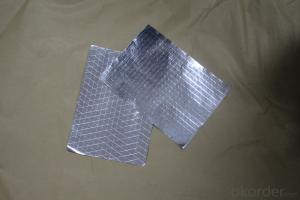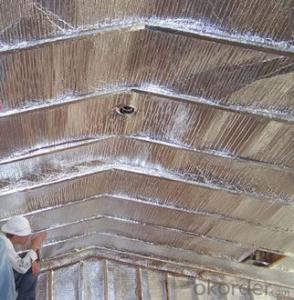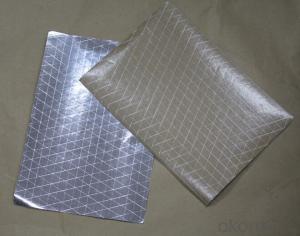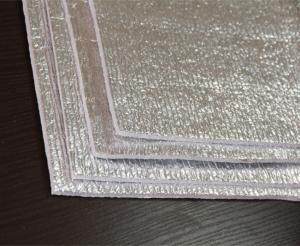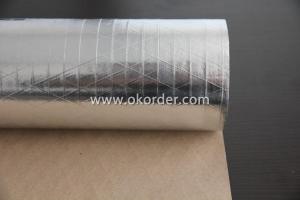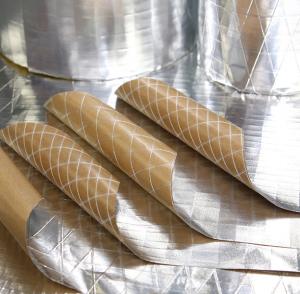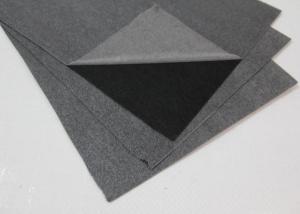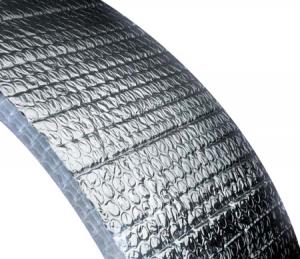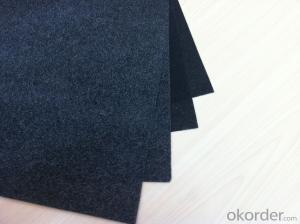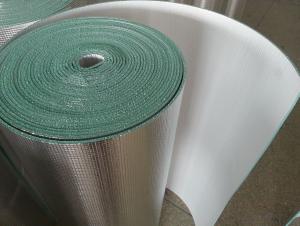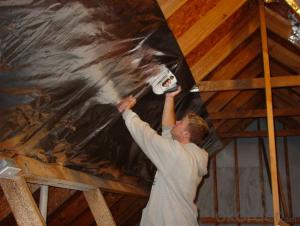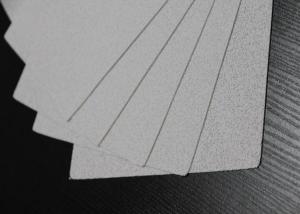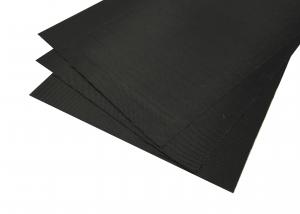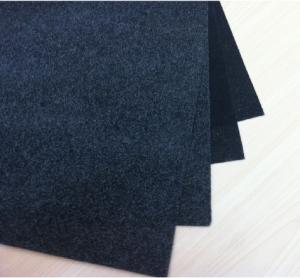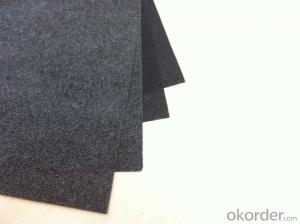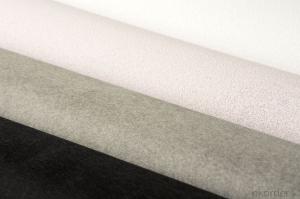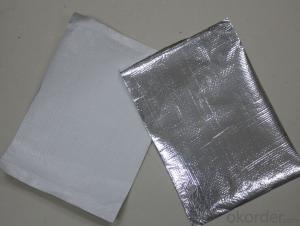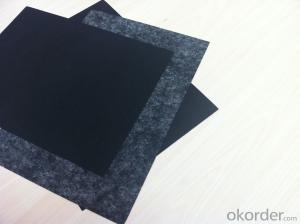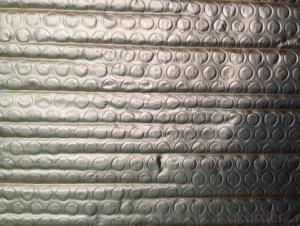flexible ducts bubble film glasswool
- Loading Port:
- China Main Port
- Payment Terms:
- TT OR LC
- Min Order Qty:
- -
- Supply Capability:
- -
OKorder Service Pledge
OKorder Financial Service
You Might Also Like
Application:
1,Building Thermal Insulation Material
(1),Roof,Underlay,Under Concrete & floor Insulation;
(2),Attic,Crawl Space,Stud Wall ,Metal Frame Building Insulation.
2,Wrapping
(1),Protective coatings of ventilating pipe,HVAC Duct & Pipe;
(2),Shells of air conditioner and water heater.
Feature:
1), Waterproof, heavy duty, clean, light, flexible, non-absorbent surface
2), Fire resistant & antiglare
3), Recyclable, environmentally friendly
4), Effective in extreme temperatures both hot and cold
5), Easily install, cut, stapled, nailed or glued into place
6), Safe to handle with no special clothing or breathing Equipment
Feature:
1), Waterproof, heavy duty, clean, light, flexible, non-absorbent surface
2), Fire resistant & antiglare
3), Recyclable, environmentally friendly
4), Effective in extreme temperatures both hot and cold
5), Easily install, cut, stapled, nailed or glued into place
6), Safe to handle with no special clothing or breathing Equipment

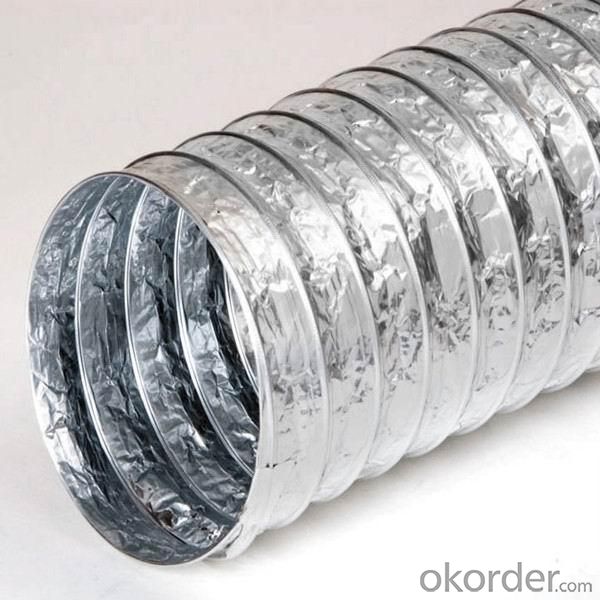


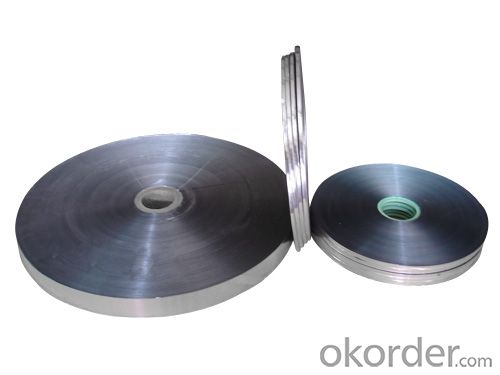


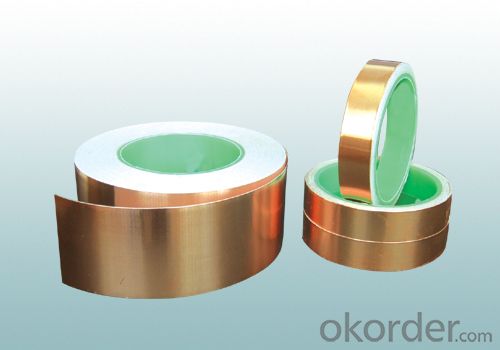
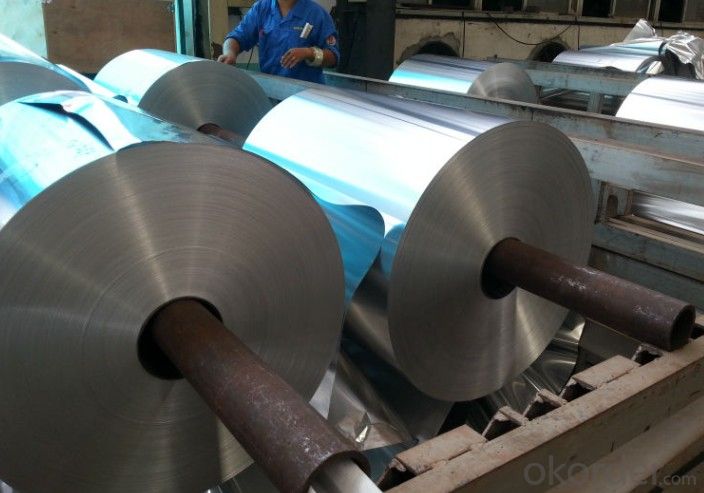

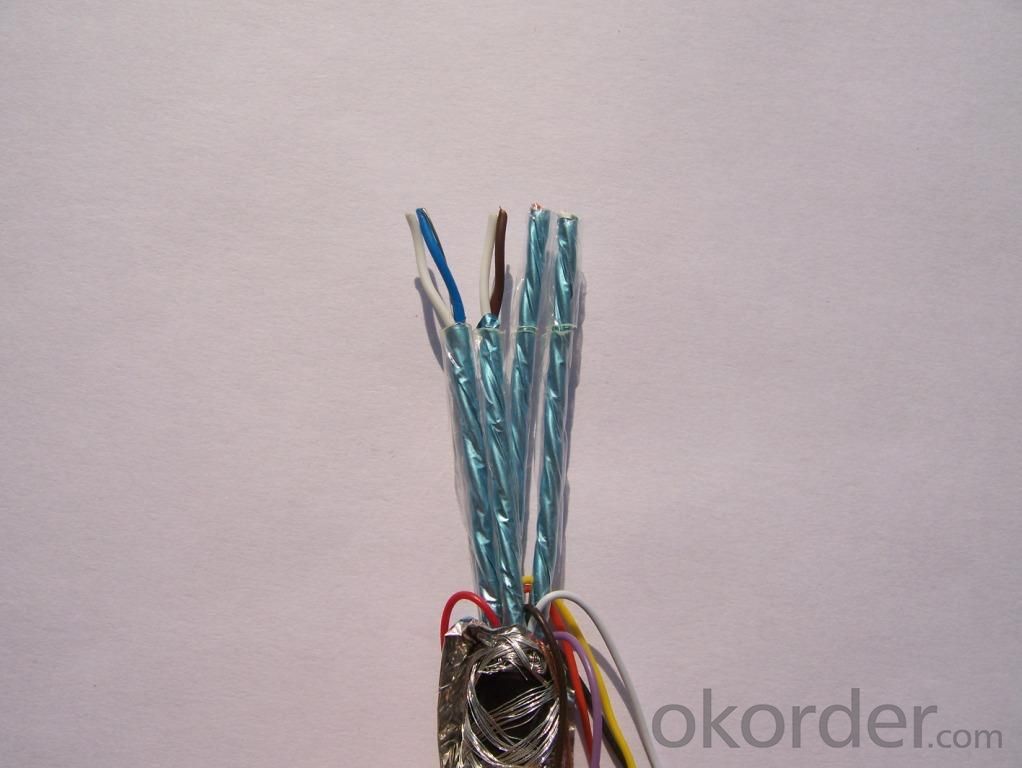
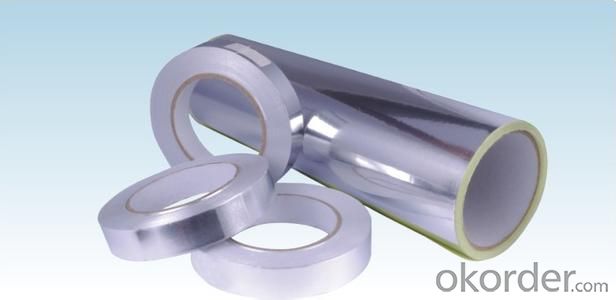
- Q:What is the typical thickness of fiberglass facing?
- The typical thickness of fiberglass facing can vary depending on the specific application and requirements. In general, fiberglass facing is available in thicknesses ranging from 0.5 millimeters to 2 millimeters. Thinner fiberglass facing, around 0.5 to 1 millimeter, is commonly used for lightweight and flexible applications such as insulation and acoustic panels. Thicker fiberglass facing, around 1.5 to 2 millimeters, is often used for more heavy-duty applications where higher strength and durability are required, such as in construction and industrial settings. It is important to consider the specific needs and specifications of a project to determine the appropriate thickness of fiberglass facing to ensure optimal performance and functionality.
- Q:Are there any health concerns associated with fiberglass facing?
- Yes, there are health concerns associated with fiberglass facing. Fiberglass is made up of tiny fibers that can become airborne when disturbed, such as during installation or removal. Inhalation of these fibers can irritate the respiratory system and cause symptoms like coughing, chest tightness, and difficulty breathing. Prolonged exposure to fiberglass fibers can also lead to a serious lung condition called fibrosis, where the lung tissues become scarred and stiff. Additionally, fiberglass can cause skin irritation and allergic reactions when it comes into direct contact with the skin. The small fibers can penetrate the skin, leading to itching, redness, and rash. To minimize the health risks associated with fiberglass, it is important to take precautions when working with it. This includes wearing protective clothing, gloves, goggles, and a respirator to prevent inhalation of the fibers. It is also crucial to properly clean up any fiberglass dust or debris to avoid further exposure. If you suspect that you have been exposed to fiberglass and are experiencing persistent respiratory or skin symptoms, it is recommended to seek medical attention for proper evaluation and treatment.
- Q:Does fiberglass facing help with soundproofing?
- Yes, fiberglass facing can help with soundproofing. Fiberglass is known for its excellent sound-absorbing capabilities, as it can effectively trap and dampen sound waves. When used as a facing material, fiberglass can enhance the soundproofing properties of a wall or ceiling by reducing noise transmission through it. The facing acts as a barrier that prevents sound from passing through, making it an effective solution for reducing noise pollution in various settings, such as homes, offices, studios, or even industrial environments. Additionally, fiberglass is lightweight, easy to install, and can be easily combined with other soundproofing materials for even better results.
- Q:Can fiberglass facing be painted or customized?
- Yes, fiberglass facing can be painted or customized. Fiberglass is a versatile material that can be easily painted using various types of paint, such as acrylic or oil-based paint. Before painting, it is important to properly prepare the surface by cleaning it and removing any dirt or debris. Additionally, it is recommended to use a primer to improve adhesion and ensure a smooth finish. Once the primer is dry, you can apply the desired paint color or customize the fiberglass facing using stencils, decals, or other decorative techniques. However, it is essential to use paint and materials that are suitable for outdoor use if the fiberglass facing will be exposed to harsh weather conditions. Overall, with the right preparation and paint, fiberglass facing can be painted or customized to meet your specific aesthetic preferences or design requirements.
- Q:What are the potential drawbacks of using fiberglass facing?
- There are several potential drawbacks of using fiberglass facing in various applications. Firstly, one major drawback is the health hazards associated with fiberglass. Fiberglass is made up of tiny glass fibers that can easily become airborne when disturbed. Inhaling these fibers can cause respiratory issues, skin irritations, and even long-term health problems such as lung diseases. Therefore, proper safety precautions, including wearing protective clothing and masks, need to be taken when working with fiberglass. Another drawback is the potential for fiberglass to degrade over time. Exposure to extreme heat or sunlight can cause the fiberglass to become brittle and crack. This can lead to reduced insulation properties and decreased durability of the material. Additionally, fiberglass is susceptible to moisture absorption, which can cause it to deteriorate and lose its effectiveness. Furthermore, fiberglass facing may not be as effective in certain applications compared to alternative materials. For example, fiberglass may not provide sufficient insulation in areas with high humidity or where there is a risk of water leakage. In these situations, other materials such as foam or foil-faced insulation may be more suitable. Additionally, fiberglass facing can be more expensive than other options. While fiberglass itself is relatively affordable, the cost of installation and maintenance can be higher due to the need for specialized equipment and safety measures. This can make fiberglass facing less cost-effective, especially for smaller projects or those on a tight budget. Lastly, fiberglass facing can be challenging to work with. The material is rigid and can be difficult to cut, shape, and install properly. It requires specific tools and expertise to handle fiberglass effectively, which may limit its accessibility for DIY enthusiasts or inexperienced individuals. In summary, the potential drawbacks of using fiberglass facing include health hazards, degradation over time, limited effectiveness in certain applications, higher costs, and the difficulty in working with the material. It is essential to carefully consider these factors before deciding to use fiberglass facing and to ensure proper safety measures are in place when working with this material.
- Q:What are the benefits of using fiberglass facing?
- Fiberglass facing offers numerous advantages in various applications. Firstly, its exceptional strength and durability make it highly resistant to cracking, warping, and other forms of damage. This quality makes it ideal for construction and structural purposes, where strength and longevity are crucial. Furthermore, fiberglass facing provides excellent thermal insulation properties. With its low thermal conductivity, it effectively prevents heat transfer and maintains a consistent temperature in both hot and cold environments. Consequently, it is widely used in insulation for buildings, HVAC systems, and other energy-efficient applications. Another benefit of fiberglass facing is its resistance to moisture and corrosion. Since it is non-porous and does not absorb water, it is highly resistant to mold, mildew, and rot. This makes it a suitable choice for damp or humid environments, including bathrooms and kitchens. Moreover, fiberglass facing is lightweight and easy to handle, making it convenient to install and transport. It can be easily cut and shaped to fit various surfaces and configurations, allowing for flexibility in design and installation. Its lightweight nature also reduces strain on supporting structures, making it cost-effective for construction projects. Lastly, fiberglass facing comes in a wide range of sizes, thicknesses, and finishes, allowing customization to meet specific project requirements. It can be coated or laminated with different materials to enhance performance, such as adding a vapor barrier or reflective surface. This versatility makes it suitable for various applications across industries, from construction to transportation. In summary, the advantages of fiberglass facing include its strength and durability, thermal insulation properties, resistance to moisture and corrosion, lightweight nature, and customization options. These qualities make it a popular choice in industries where these characteristics are highly valued.
- Q:Fiberglass Felt Polyester Powder Adhesive Details
- The continuous raw silk mats are formed by the process of drawing the glass precursor or the continuous filament which is released from the original cylinder in the form of a 8-inch fabric on a continuous moving web and bonded with a powder binder. Continuous fiberglass filament fiber in the fiber is continuous, so the composite material to enhance the effect of shorter cut felt good. Mainly used in the pultrusion method
- Q:What is the lifespan of fiberglass facing?
- The durability of fiberglass facing may differ due to several factors, including the material's quality, the environment it encounters, and the level of maintenance it receives. Nonetheless, fiberglass facing typically endures for a span of 20 to 30 years on average. By ensuring proper care and maintenance, it is conceivable for fiberglass facing to persist for an even greater duration. Regular cleaning, refraining from using harsh chemicals or abrasive cleansers, and shielding it from excessive sunlight and extreme temperatures can contribute to extending its lifespan.
- Q:What is the glass fiber needle felt dust filter bag
- The fibrous web is reinforced by a felt-like nonwoven fabric filter material. Hangzhou Xiao Yang, yes
- Q:How does fiberglass facing compare to other types of insulation materials?
- Fiberglass facing is a popular choice for insulation materials due to its excellent thermal performance and durability. Compared to other types of insulation materials such as foam or cellulose, fiberglass facing offers superior resistance to moisture, mold, and pests. It also provides better fire resistance, making it a safer option. Additionally, fiberglass facing is relatively easy to install and has a long lifespan, making it a cost-effective choice for insulation needs.
1. Manufacturer Overview |
|
|---|---|
| Location | |
| Year Established | |
| Annual Output Value | |
| Main Markets | |
| Company Certifications | |
2. Manufacturer Certificates |
|
|---|---|
| a) Certification Name | |
| Range | |
| Reference | |
| Validity Period | |
3. Manufacturer Capability |
|
|---|---|
| a)Trade Capacity | |
| Nearest Port | |
| Export Percentage | |
| No.of Employees in Trade Department | |
| Language Spoken: | |
| b)Factory Information | |
| Factory Size: | |
| No. of Production Lines | |
| Contract Manufacturing | |
| Product Price Range | |
Send your message to us
flexible ducts bubble film glasswool
- Loading Port:
- China Main Port
- Payment Terms:
- TT OR LC
- Min Order Qty:
- -
- Supply Capability:
- -
OKorder Service Pledge
OKorder Financial Service
Similar products
New products
Hot products
Related keywords
